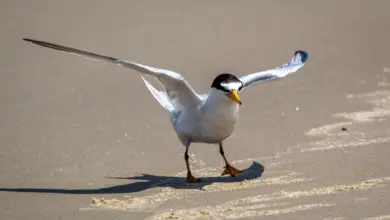Little Shearwaters or Southern Little Shearwaters
The Little Shearwaters (Puffinus assimilis), sometimes called Southern Little Shearwaters to distinguish it from the North Atlantic Little Shearwater which was formerly included in this species, is a small shearwater in the seabird family Procellariidae.
Despite the scientific name, this species is completely unrelated to the puffins, which are auks, the only resemblance being that they are both burrow-nesting seabirds.
It nowadays contains 5 accepted subspecies, with mtDNA cytochrome b sequence data indicating that the North Atlantic Little Shearwaters (boydi and baroli) is closer to Audubon’s Shearwater (Austin 1996, Heidrich et al. 1998), and myrtae being closer to the Hawaiian and possibly Townsend’s Shearwater (Austin et al. 2004). Heinroth’s Shearwater was also sometimes considered a subspecies of this bird; the relationship between the Little and Audubon’s Shearwater is probably not as close as long believed (Austin 1996, Heidrich et al. 1998, Austin et al. 2001, but see also Penhallurick and Wink 2004, and Rheindt and Austin 2005).
Distribution / Range
This species occurs throughout the oceans of the Southern Hemisphere south of the Tropic of Capricorn.
This bird has the typically “shearing” flight of the genus, dipping from side to side on stiff wings with few wingbeats, the wingtips almost touching the water, but in light winds has a more flapping flight than its larger relatives.
This bird looks like a flying cross, with its wings held at right angles to the body, and it changes from black to white as the black upperparts and white undersides are alternately exposed as it travels low over the sea.
This is a gregarious species, which can been seen in large numbers from boats or headlands, especially on passage in autumn.
Breeding / Nesting
It breeds in colonies on islands and coastal cliffs, nesting in burrows which are only visited at night to avoid predation by large gulls.
Description
At 25-30 cm in length with a 58-67 cm wingspan, it is like a small Manx Shearwater but has proportionally shorter and broader wings, with a pale area on the inner flight feathers. Its bill is more slender than that of Manx, and its dark eye stands out against the surrounding white area.
Diet / Feeding
It feeds on fish and mollusks. It does not follow boats.
Calls / Vocalizations
It is silent at sea, but at night the breeding colonies are alive with raucous cackling calls.
Beauty Of Birds strives to maintain accurate and up-to-date information; however, mistakes do happen. If you would like to correct or update any of the information, please contact us. THANK YOU!!!




